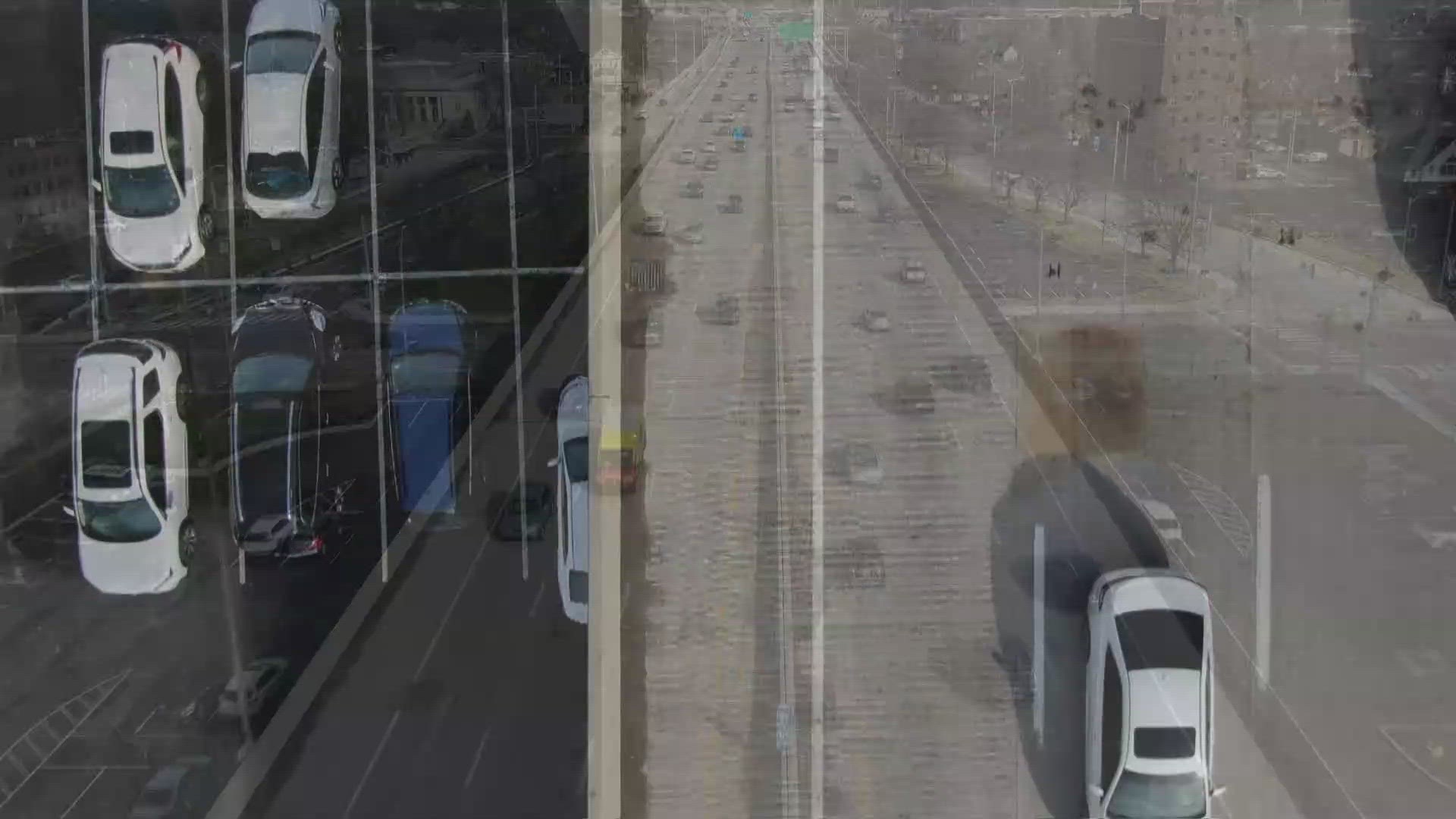INDIANAPOLIS — An estimated 1 million people will travel to Indiana to experience the path of totality for the solar eclipse on April 8.
That's a lot of extra cars on our roads and highways all at once.
Emergency responders are warning Hoosiers now about the potential traffic trouble, how they plan to deal with it and what we should plan for, too.
It's fitting that the path of totality cuts through the crossroads of America.
But with Indiana expecting a huge influx of visitors, tourist traffic could make us the crossroads of congestion, too.
"We've learned that in some of these events, people can be stuck in traffic for hours," Indiana State Police Sgt. John Perrine said.
He's not exaggerating.
In Oregon in 2017, during the last total solar eclipse, drivers endured bumper to bumper traffic for miles. A one-hour trip took five hours.
That same year in Kentucky, same deal. The post-eclipse exodus created a traffic nightmare lasting nine hours in the path of totality. Interstates were more like parking lots.
"Some of them have been extremely challenging where they had total gridlock," said Mike Pruitt, public information officer for the Johnson County Joint Incident Management Team.
Police and emergency planners are hearing warnings from a lot of cities that experienced the path of totality in 2017.
In Kansas City, clouds shifted during the eclipse, creating a mad dash to move for better viewing.
"A lot of people just couldn't get to a spot, which resulted in basically gridlocking the entire city," said Shane Booker, emergency management director in Hamilton County. "And to think that we could have people here shutting down basically main travel thoroughfares, just so that they can get a glimpse of the eclipse, is really concerning."
Hundreds of thousands of visitors are coming to Indiana for this solar eclipse. They'll likely trickle in over a couple of days. So, it's the getting out that's an issue — everybody on the road all at once.
And it's such a large area, that targeted traffic control, like we see for the Indy 500, just isn't feasible. It's why police are putting out a warning now — to be prepared, be patient and after the eclipse, wait things out.
"Once the eclipse is over? Sit still. Let the traffic go for awhile. We see this happen at the Indianapolis Motor Speedway every year where everybody packs in. And the people that plan to take their time and go back to their cars and hang out? They're the happiest because they don't fight the traffic getting out. They don't get caught in the gridlock," Pruitt said.
They also suggest planning your route now.
Plus, charge your phone, gas up and load the car with essentials on the day of the eclipse.
"It's almost thinking like a snowstorm," Perrine said. "You want to make sure you have food and water and blankets and flashlights and things like that."
"It's so that if you do get stuck in traffic for two, three hours, you're prepared to do that," Pruitt added.
Because in gridlock, basic needs like gas, food, water and medical emergencies could turn into major problems.
In Johnson County, they'll have smaller ATVs at the ready to deploy and help.
"The all-terrain vehicles are staged throughout the county, ready to respond to maybe where we have traffic gridlock, so that we can get medical care to people," Pruitt said.
State Police will have all troopers on duty that day. All days off have been canceled for April 8.
Plus, they plan to use their extensive camera network and aircraft, including three helicopters to target traffic issues.
In Hamilton County, where there are viewing events from Conner Prairie to Ruoff Music Center to Grand Park, they're using portable cameras on trailers.
But the EMA is also renting an airplane they got for a deal at $140 an hour to monitor traffic and livestream video to help officers move things along and identify any problems.
"So that's going to be crucial for us to have that eye in the sky, so to speak, of what's happening," Booker said.
During the eclipse, police want to make sure what's not happening is people stopping on the road to watch it.
It's illegal. You could get a ticket — or get hit and get hurt.
"Not only is it illegal to stop on or along the interstate to view the eclipse, it's simply not safe," Perrine said. "Find somewhere safe to do it that does not include a ramp, a roadside or an interstate."
No doubt, the solar eclipse experience will be memorable.
But before and after? Buckle up.
"We say arrive early and stay late," Perrine said. "If enough people have adequate plans, I think our plans will match up and everybody will be able to get to where they're going and get back home safely."
Or avoid traffic altogether and watch from home.
Police also advise if you do plan to drive to watch the eclipse somewhere, consider taking a paper map. You know, those things most of us haven't used in years?
That's because with everyone using GPS and their cellphones, police say service could be spotty or get jammed on April 8.

